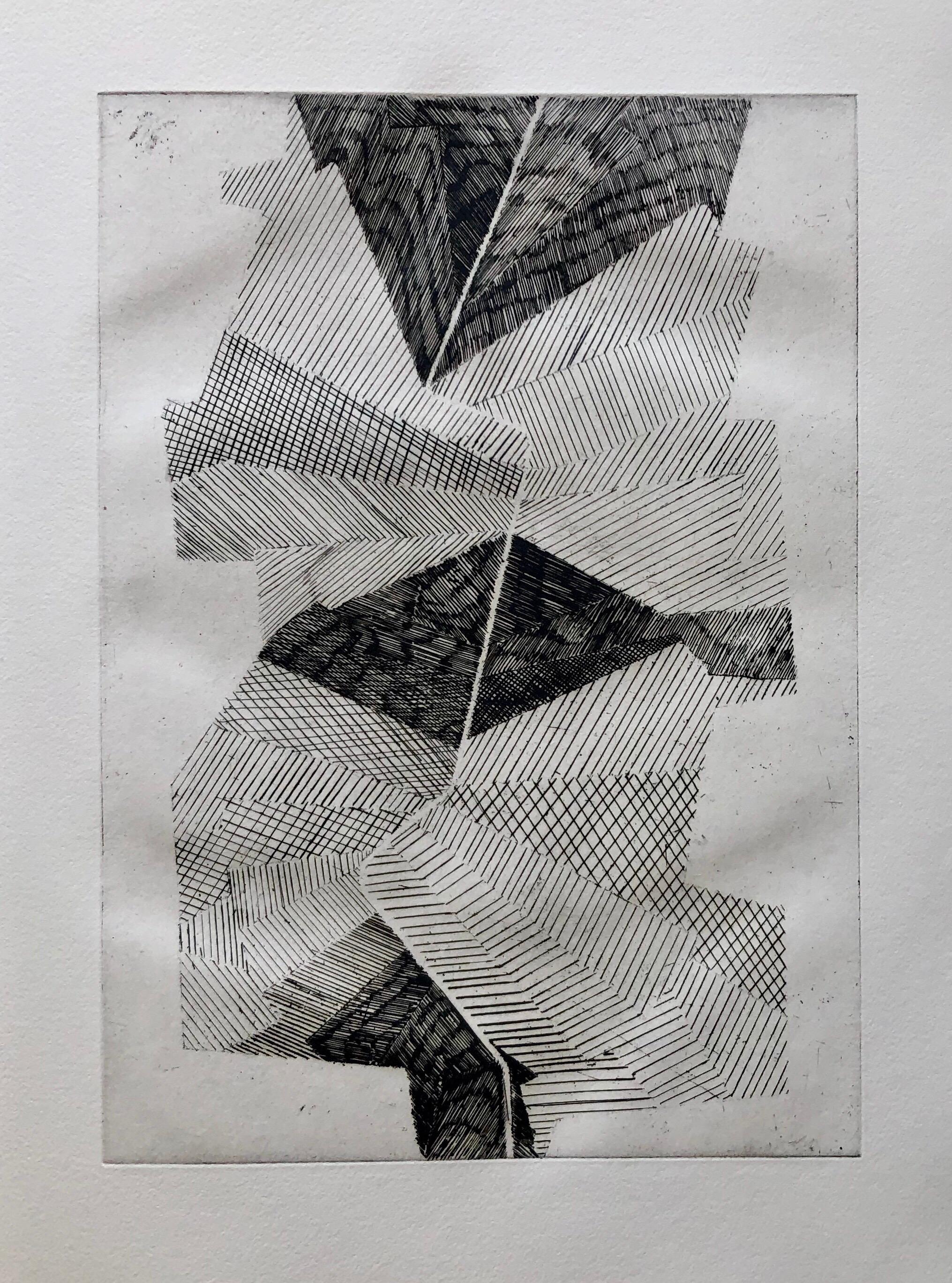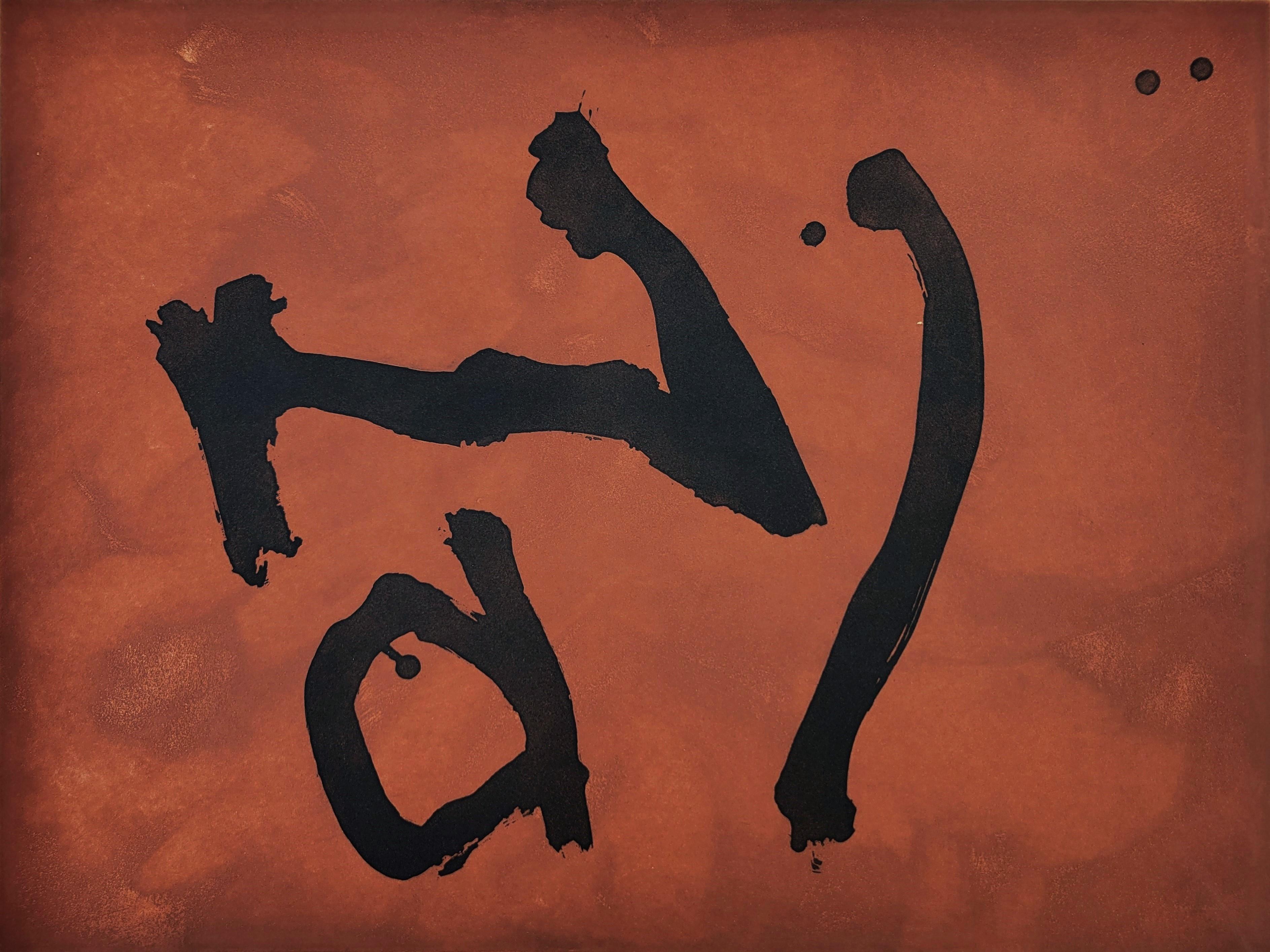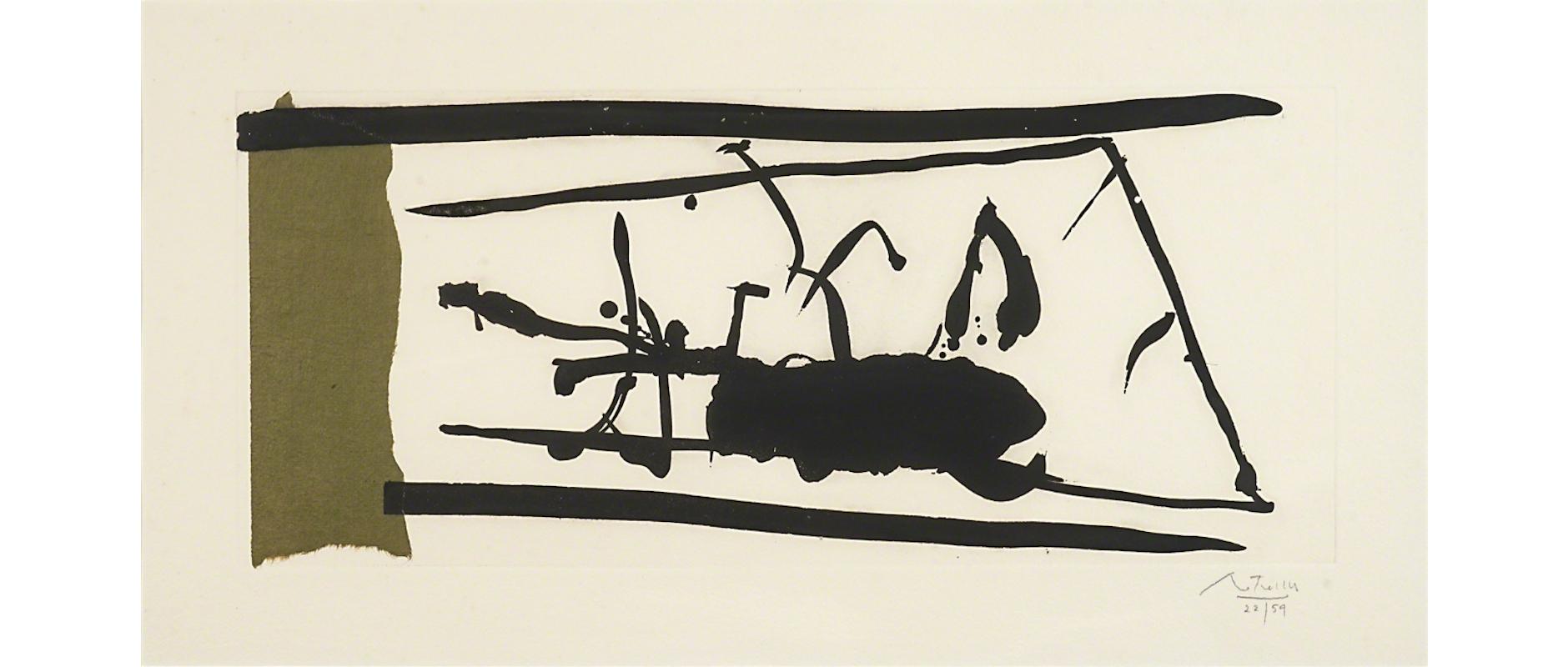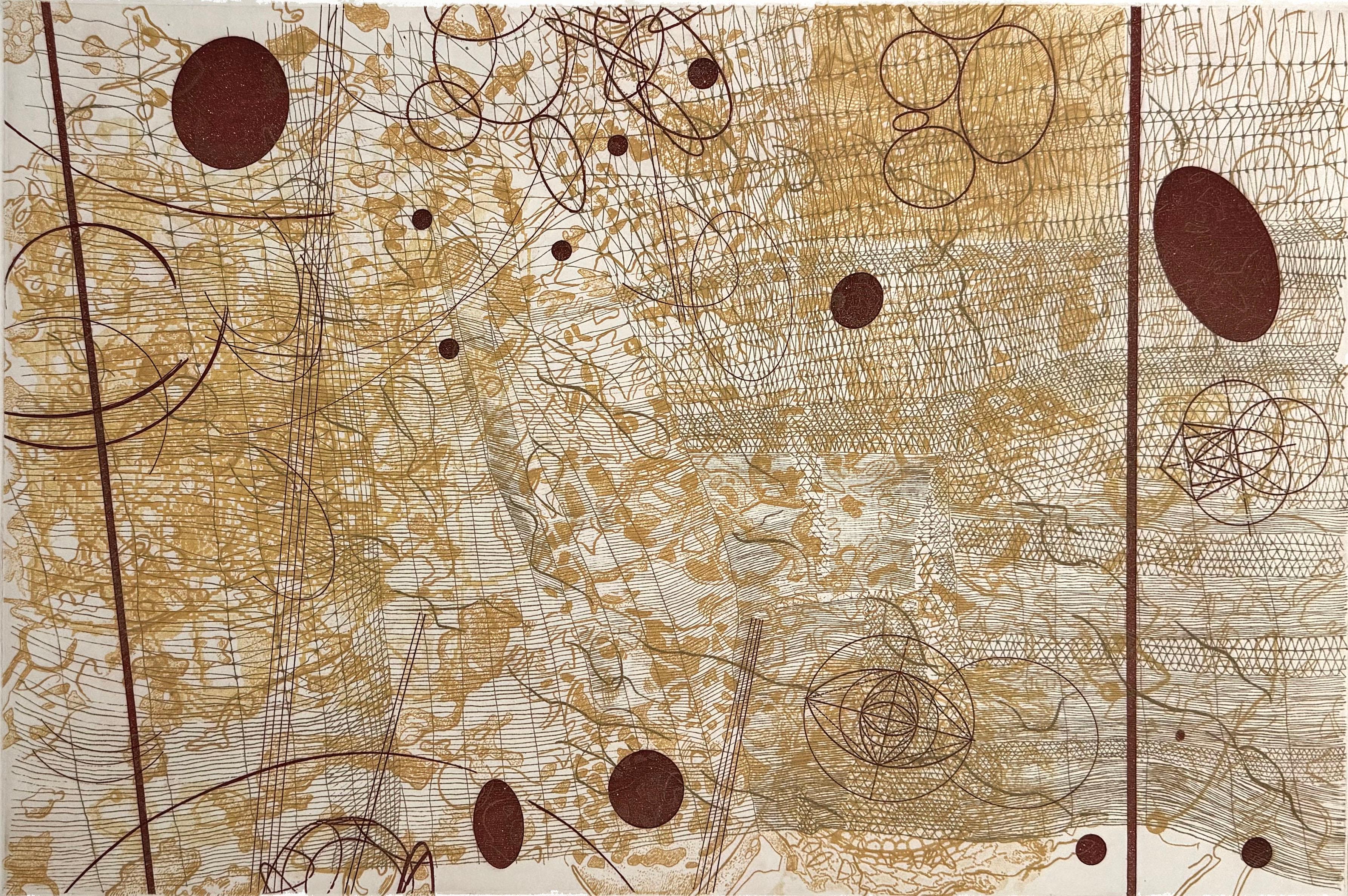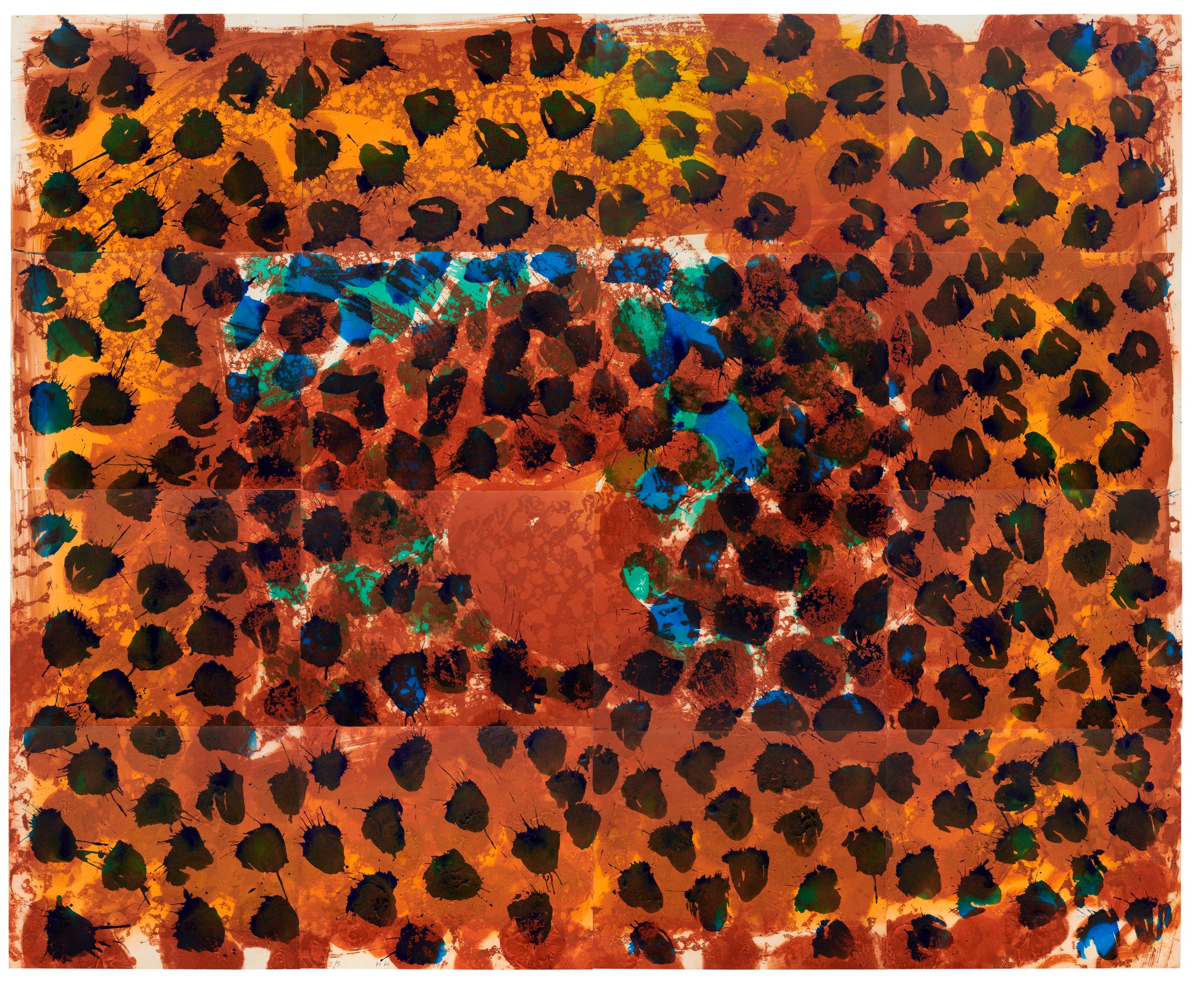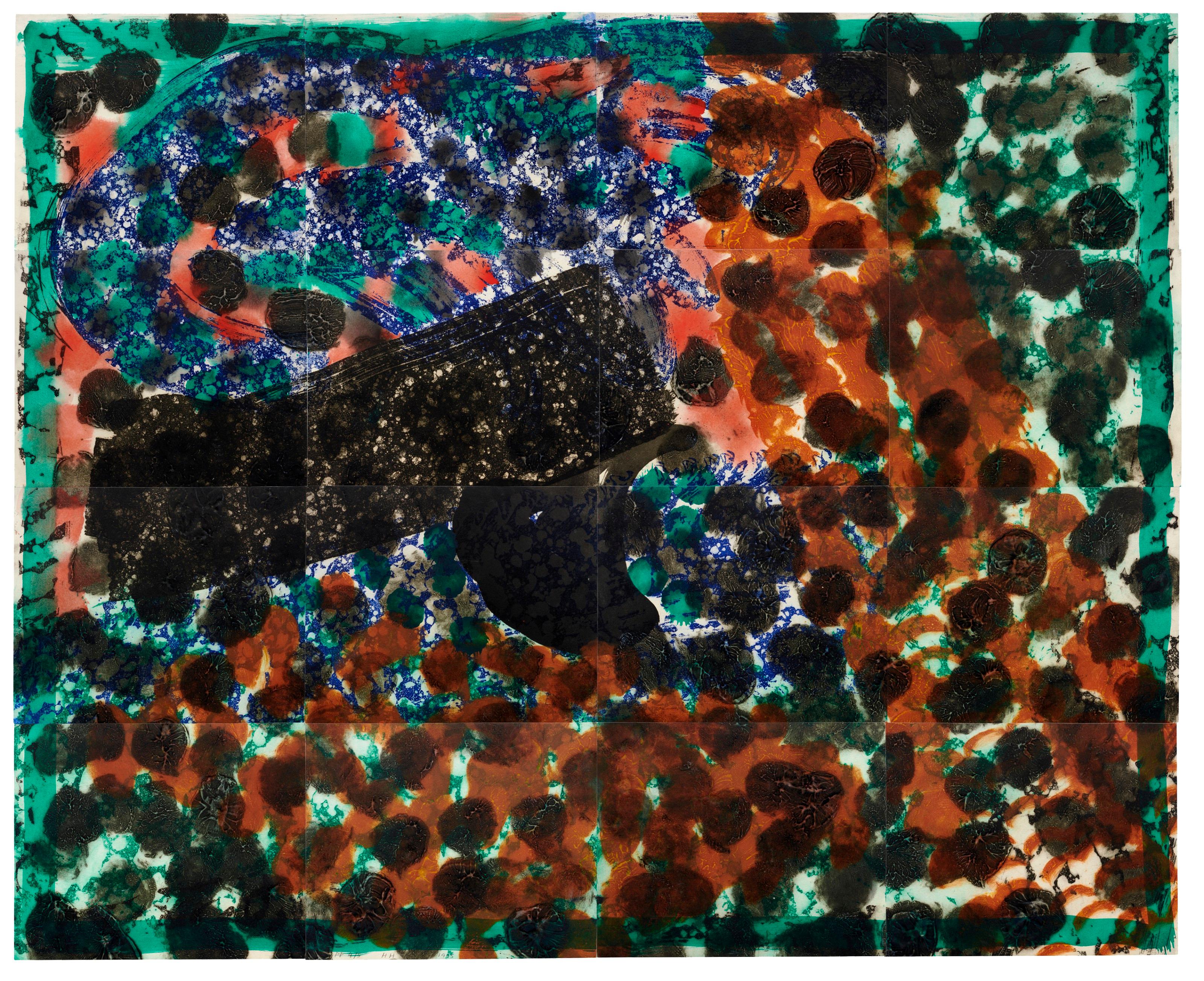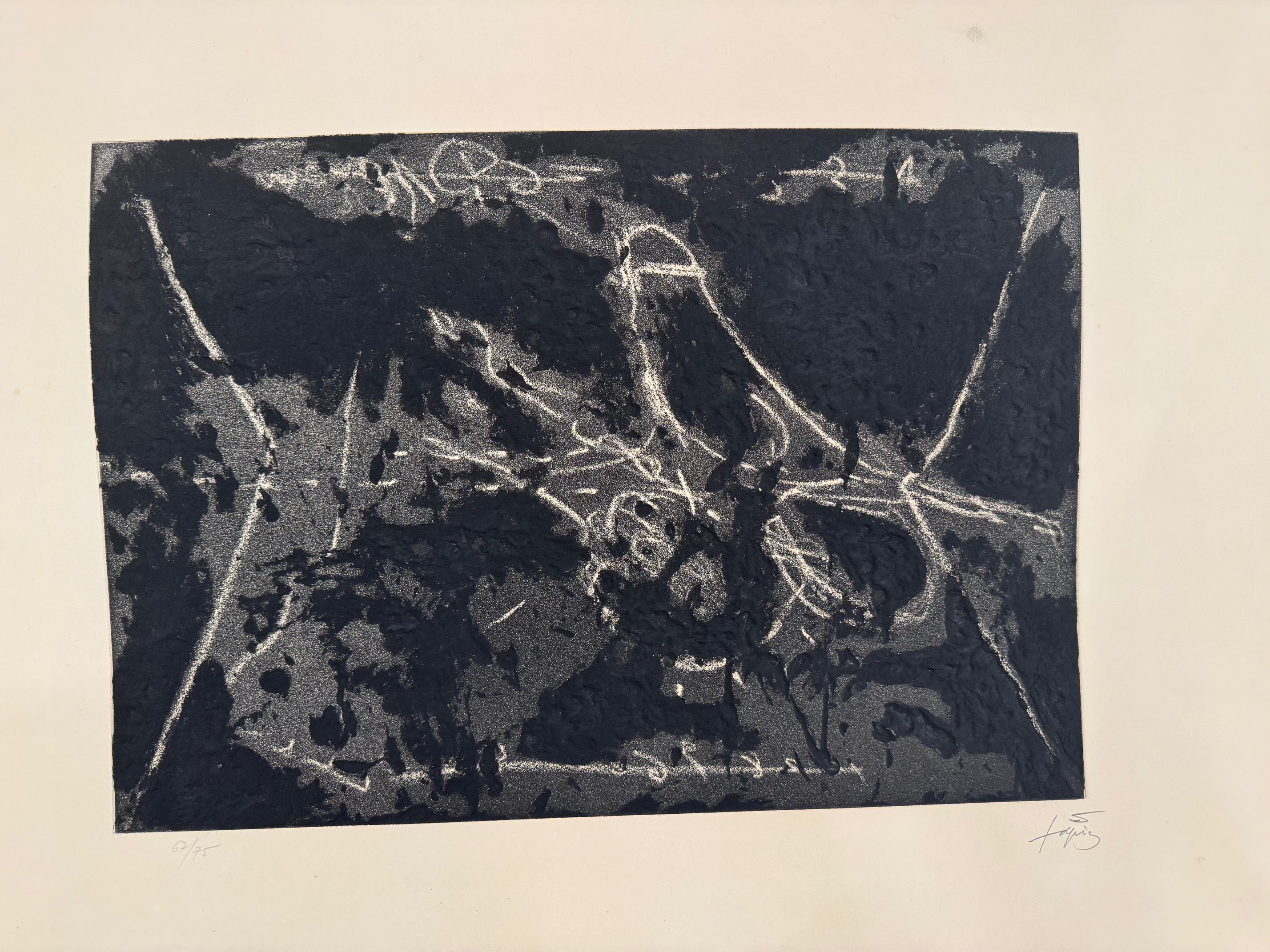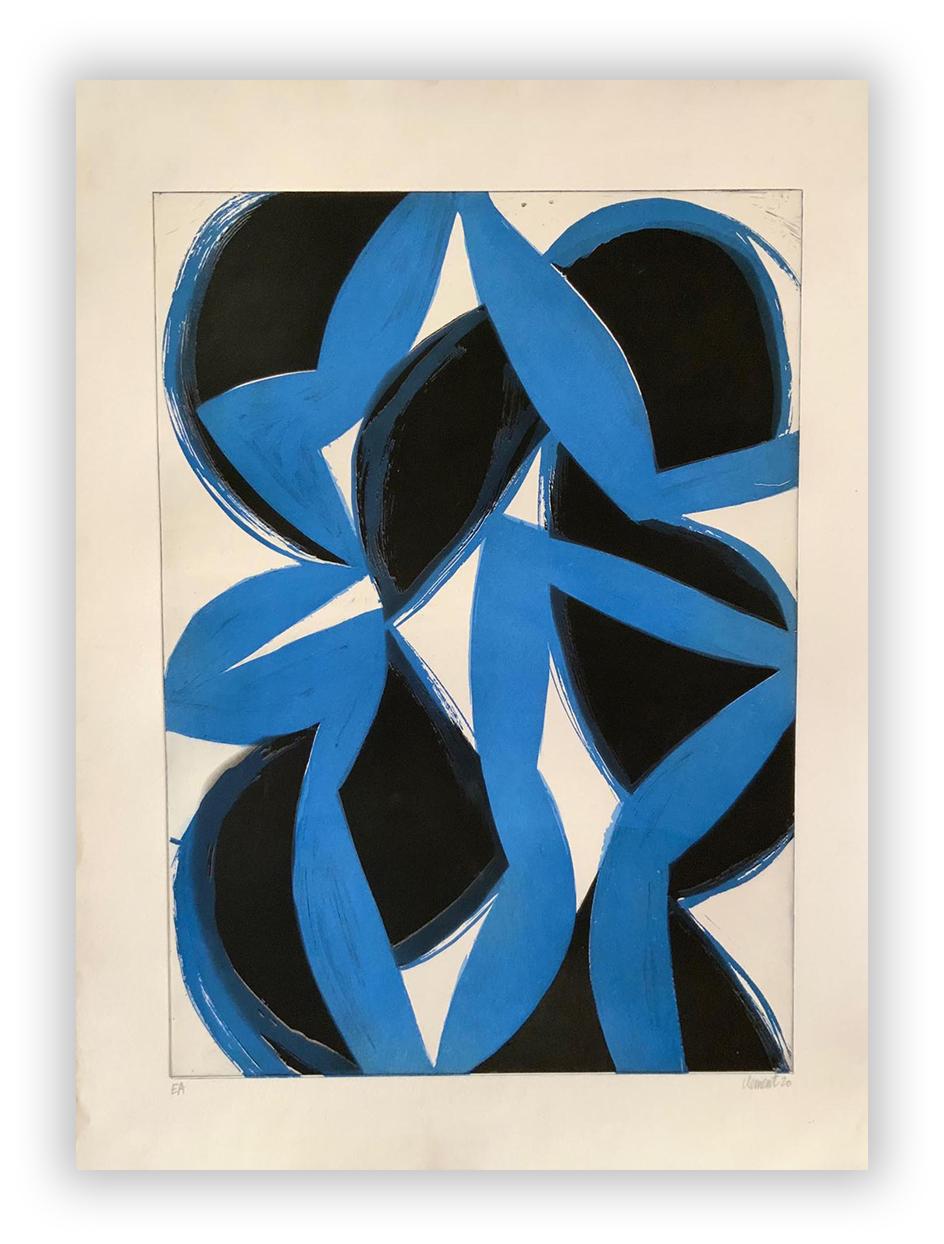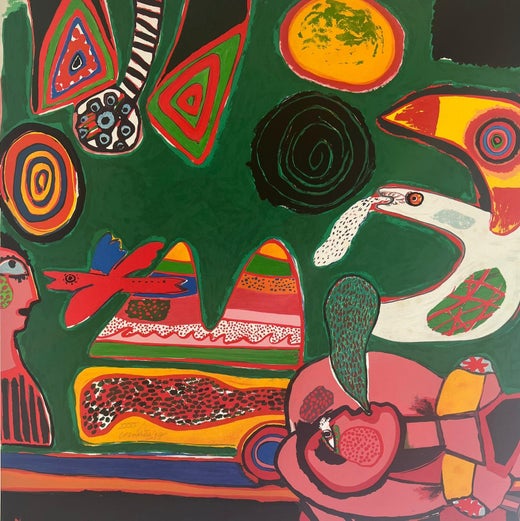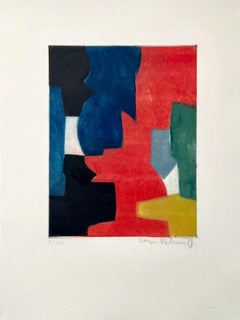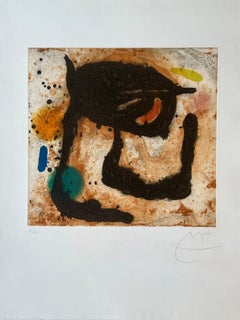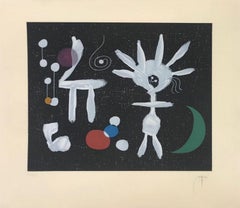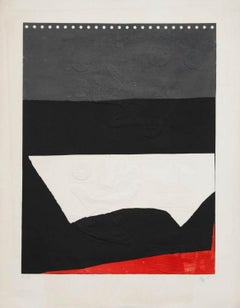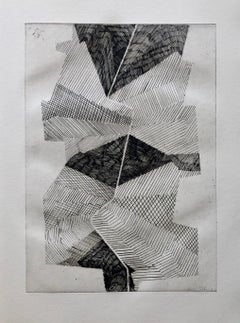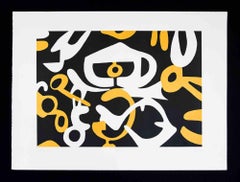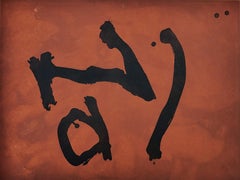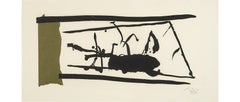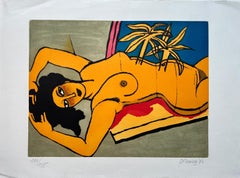
Nude under the palm trees
Want more images or videos?
Request additional images or videos from the seller
1 of 9
Guillaume CorneilleNude under the palm trees1992
1992
About the Item
- Creator:Guillaume Corneille (1922 - 2010, Dutch)
- Creation Year:1992
- Dimensions:Height: 23.63 in (60 cm)Width: 31.7 in (80.5 cm)
- Medium:
- Movement & Style:
- Period:
- Condition:Folds in the margins otherwise in very good condition.
- Gallery Location:Paris, FR
- Reference Number:Seller: LCD69081stDibs: LU1066215428482
Guillaume Corneille
Corneille, also known as Corneille Guillaume Beverloo, was a painter and graphic artist who radicalized the conservative Dutch art world in the early 1950s. He founded CoBrA in 1949, a post-war Expressionist European movement, along with five other influential artists that included Karel Appel and Constant. Born to Dutch parents in Liege, Belgium on July 3, 1922, Corneille went on to study art at the Academy of Art in Amsterdam in 1940, but is generally considered a self-trained painter. His approach is often described as imaginative and poetic, and is characterized by an eccentric use of color and his placing of familiar subjects, such as cats, birds, and women, in mythological or juvenile settings. “I am a painter of joy,” the artist declared at his 2007 exhibit at the Cobra Museum. He was notably influenced by African art, which he collected during his time traveling throughout the continent during the 1950s. His work was also affected by Pablo Picasso and Paul Klee, and, most notably, Vincent van Gogh’s use of color and form. His works are featured in collections at the Cobra Museum of Modern Art in the Netherlands, the Fine Arts Museums of San Francisco, and the Museum of Fine Arts in Boston. He died on September 5, 2010 in Paris, France.
About the Seller
4.8
Vetted Professional Seller
Every seller passes strict standards for authenticity and reliability
Established in 2007
1stDibs seller since 2018
173 sales on 1stDibs
Typical response time: 12 hours
Authenticity Guarantee
In the unlikely event there’s an issue with an item’s authenticity, contact us within 1 year for a full refund. DetailsMoney-Back Guarantee
If your item is not as described, is damaged in transit, or does not arrive, contact us within 7 days for a full refund. Details24-Hour Cancellation
You have a 24-hour grace period in which to reconsider your purchase, with no questions asked.Vetted Professional Sellers
Our world-class sellers must adhere to strict standards for service and quality, maintaining the integrity of our listings.Price-Match Guarantee
If you find that a seller listed the same item for a lower price elsewhere, we’ll match it.Trusted Global Delivery
Our best-in-class carrier network provides specialized shipping options worldwide, including custom delivery.More From This Seller
View AllComposition blue, red , green and black III
By Serge Poliakoff
Located in Paris, FR
Etching and aquatint, 1958
Handsigned by the artist in pencil and numbered 5/100
Publisher : Jacques Goldschmidt, Paris
Printer : Jean Signovert, Paris
Catalog : [Schneider III]
5...
Category
1950s Abstract Abstract Prints
Materials
Etching, Aquatint
Le Dandy
By Joan Miró
Located in Paris, FR
Aquatint and carborundum, 1969
Handsigned by the artist in pencil
Edition : 52/75
Publisher : Maeght, Paris
Catalog : [Dupin 492]
74.00 cm. x 59.00 cm. 29.13 in. x 23.23 in. (paper...
Category
1960s Abstract Abstract Prints
Materials
Aquatint
$8,031
Morning rain in the moonlight
By Joan Miró
Located in Paris, FR
Etching and aquatint, 1958
Handsigned by the artist in pencil and numbered 232/300
Printer : Crommelynck (Paris)
Catalog : Maeght 1713
56.00 cm. x 65.00 cm. 22.05 in. x 25.59 in. (paper)
39.00 cm. x 48.00 cm. 15.35 in. x 18.9 in. (image)
After Miro...
Category
1950s Abstract Abstract Prints
Materials
Etching, Aquatint
Gris Noir
By Antoni Clavé
Located in Paris, FR
Aquatint and carborundum
Handsigned by the artist in pencil and annoted HC
LCD4215
Category
1970s Abstract Abstract Prints
Materials
Aquatint
Warangal
By Bertrand Dorny
Located in Paris, FR
Etching and aquatint, 1970
Handsigned by the artist in pencil and numbered 13/65
Publisher : L'Œuvre Gravée (Paris)
89.50 cm. x 63.00 cm. 35.24 in. x 24.8 in. (paper)
76.00 cm. x 56...
Category
1970s Abstract Abstract Prints
Materials
Etching, Aquatint
Rosul Negori
By Bertrand Dorny
Located in Paris, FR
Etching and aquatint, 1970
Handsigned by the artist in pencil and numbered 15/50
Publisher : L'Œuvre Gravée (Paris)
75.50 cm. x 56.00 cm. 29.72 in. x 22.05 in. (paper)
64.50 cm. x 4...
Category
1970s Abstract Abstract Prints
Materials
Etching, Aquatint
You May Also Like
French Avant Garde Bold Abstract Geometric Aquatint Etching Op Art Kinetic
By Jean Deyrolle
Located in Surfside, FL
Original etching, aquaforte, aquatint engraving. poetry text by Robert Pinget on facing fold of sheet. The individual sheet is unsigned. The justification page is hand signed by t...
Category
1960s Abstract Geometric Abstract Prints
Materials
Etching, Aquatint
Untitled - Aquatint by Carla Accardi - 1990s
By Carla Accardi
Located in Roma, IT
Aquatint made on zinc plate on Magnani-Pescia paper 310 gr/m2, paper size 75cm x 55cm, work size 55cm x 40.5 cm. Excellent condition, slight signs of use, no defects.
Grafica Lombardi guarantee stamp...
Category
1990s Abstract Abstract Prints
Materials
Etching, Aquatint
Signs on Copper /// Robert Motherwell Abstract Expressionism Black Brown Etching
By Robert Motherwell
Located in Saint Augustine, FL
Artist: Robert Motherwell (American, 1915-1991)
Title: "Signs on Copper"
*Monogram signed and numbered by Motherwell in pencil lower right
Year: 1981
Medium: Original Lift-Ground Etc...
Category
1980s Abstract Expressionist Abstract Prints
Materials
Etching, Aquatint, Intaglio
Glass Garden
By Robert Motherwell
Located in Laguna Beach, CA
Created in 1984 on handmade paper, “Glass Garden” was signed in pencil, numbered 50/59, and published by Motherwell with his blind stamp in New York City.
Robert Motherwell, the youn...
Category
20th Century Abstract Expressionist Abstract Prints
Materials
Etching, Aquatint
"Curvy Brushstrokes" Large etching with aquatint, framed
By Sol LeWitt
Located in San Francisco, CA
This artwork titled "Curvy Brushstrokes" 1997 is a colors etching with sugar lift aquatint on Somerset textured white paper by renown artist Sol (Solomon) LeWitt, 1928-2007. It is hand signed and numbered 1/15 in pencil by the artist. The image size is 29.90 x 39.90 inches, paper sheet size is 40.5 x 49.80 inches, framed size is 43.75 x 53 inches. Published by Crown Point Press, San Francisco, printed by Dana Sywulak, assisted by Dena Schneleit, Mary Andrews and Case Hudson at Crown Press, San Francisco. Referenced and pictured in the artist's catalogue raisonne, plate #1997.07. Custom framed in a wooden black frame, floated on white backing, with white spacer. It is in excellent condition, the frame has minor very small restorations, practically invisible.
About the artist:
Known for his modular white cube sculpture, geometric drawings and abstract design paintings including many wall paintings that took teams of people to execute, Sol LeWitt was a major promoter of dominant post World War II Conceptualism and Minimalism. He used geometric shapes and lines to challenge his viewers, and sometimes they seemed logical and other times they seemed to have no basis in either reason or reality.
Although he was highly active in New York City, he shied away from any semblance of art celebrity life style and spent much of his later life working from his home and studio in Chester, Connecticut. At the beginning of his career when he was gaining notoriety, conservative critics panned him fiercely. Seeking to get away from the frenetic activity of the New York art scene, he went to Spoleto, Italy in the 1980s and remained there for many years. The influence of Italian culture seemed to lend a new opulent quality to his work, and also the launching of his wall paintings, which he called drawings even though they were done with acrylic paint. "He began making colored flagstone patterns, spiky sculptural blobs and ribbons of color, like streamers on New Year's Eve, often as enormous decorations for buildings around the world. It was if he had devised a latter-day kind of Abstract Expressionism . . ." (Kimmelman)
Of his personal modesty it was written: "He tried to suppress all interest in him as opposed to his work; he turned down awards and was camera-shy and reluctant to grant interviews. He particularly disliked the prospect of having his photograph in the newspaper." (Kimmelman)
Sol LeWitt was born in Hartford, Connecticut to Russian immigrant parents. His father, a doctor, died when Sol was age six, and he and his mother then went to live with an aunt in New Britain, Connecticut. His mother encouraged his art talent, and enrolled him in classes at the Wadsworth Atheneum. LeWitt's subsequent residence in Chester, after he was a well-known artist, was near the Atheneum, and he became a strong supporter of that institution including the securing of a long time loan to it of a highly prestigious private collection of modern art.
LeWitt earned a B.F.A. degree from Syracuse University in 1949, and then was drafted in the Korean War. His special assignment was making posters for the Special Services. From 1955 to 1956, he worked as a graphic designer for architect I.M. Pei, who was beginning his career. He also did pasteups for Seventeen magazine...
Category
Late 20th Century Abstract Abstract Prints
Materials
Etching, Aquatint
"Color and Black" Large colors etching with aquatint, framed
By Sol LeWitt
Located in San Francisco, CA
This artwork titled "Color and Black #3" 1991 is a colors etching with spit bit aquatint on Somerset textured white paper by renown artist Sol (Solomon) Le Witt, 1928-2007. It is and signed and numbered 11/15 in pencil by the artist. Whit the blind stamp of the publisher/printer at the lower right corner. The image size is 22.75 x 22.75 inches, paper sheet is 40.75 x 39.75 inches, Framed size is 43.25 x 42,5 inches. Published by Crown Point Press, San Francisco. Printed by Lawrence Hamin, Lothar Osterburg, Paul Mullowney and Pamela Paulson at Crown Point Press, San Francisco. Referenced and pictured in the artist's catalogue raisonne #1991.07, plate #03. Custom Framed in a wooden black frame, floated on a white backing, with white spacer. It is in excellent condition.
About the artist:
Known for his modular white cube sculpture, geometric drawings and abstract design paintings including many wall paintings that took teams of people to execute, Sol LeWitt was a major promoter of dominant post World War II Conceptualism and Minimalism. He used geometric shapes and lines to challenge his viewers, and sometimes they seemed logical and other times they seemed to have no basis in either reason or reality.
Although he was highly active in New York City, he shied away from any semblance of art celebrity life style and spent much of his later life working from his home and studio in Chester, Connecticut. At the beginning of his career when he was gaining notoriety, conservative critics panned him fiercely. Seeking to get away from the frenetic activity of the New York art scene, he went to Spoleto, Italy in the 1980s and remained there for many years. The influence of Italian culture seemed to lend a new opulent quality to his work, and also the launching of his wall paintings, which he called drawings even though they were done with acrylic paint. "He began making colored flagstone patterns, spiky sculptural blobs and ribbons of color, like streamers on New Year's Eve, often as enormous decorations for buildings around the world. It was if he had devised a latter-day kind of Abstract Expressionism . . ." (Kimmelman)
Of his personal modesty it was written: "He tried to suppress all interest in him as opposed to his work; he turned down awards and was camera-shy and reluctant to grant interviews. He particularly disliked the prospect of having his photograph in the newspaper." (Kimmelman)
Sol LeWitt was born in Hartford, Connecticut to Russian immigrant parents. His father, a doctor, died when Sol was age six, and he and his mother then went to live with an aunt in New Britain, Connecticut. His mother encouraged his art talent, and enrolled him in classes at the Wadsworth Atheneum. LeWitt's subsequent residence in Chester, after he was a well-known artist, was near the Atheneum, and he became a strong supporter of that institution including the securing of a long time loan to it of a highly prestigious private collection of modern art.
LeWitt earned a B.F.A. degree from Syracuse University in 1949, and then was drafted in the Korean War. His special assignment was making posters for the Special Services. From 1955 to 1956, he worked as a graphic designer for architect I.M. Pei, who was beginning his career. He also did pasteups for Seventeen magazine...
Category
Late 20th Century Abstract Abstract Prints
Materials
Etching, Aquatint
